Morocco Road Trip – Ultimate Guide to the Best Routes for Adventure
Discovering Morocco by road is one of the most immersive ways to experience this culturally rich and geographically diverse country. Road trips offer unparalleled flexibility, allowing you to set your own pace and explore hidden gems far from the usual tourist trails. From the windswept Atlantic coast to the towering peaks of the High Atlas Mountains and the rolling dunes of the Sahara, Morocco’s landscapes are as varied as they are breathtaking.
For adventurous travelers and slow tourism enthusiasts, road tripping is the perfect way to dive deep into the heart of Moroccan culture. It provides countless opportunities for spontaneous detours, authentic local encounters, and off-the-beaten-path discoveries that simply aren’t possible on a packaged tour.
Preparing for Your Moroccan Road Trip
Before hitting the road in Morocco, it’s essential to prepare properly to ensure a safe and enjoyable journey. Here’s what you need to consider:
Driving Requirements
- Licenses and Permits: Tourists can drive in Morocco with an international driving permit (IDP) or a valid driver’s license from their home country for up to one year.
- Insurance: Make sure your rental car includes proper insurance coverage. Consider adding comprehensive insurance for extra peace of mind, as road conditions can vary.
- Vehicle Types: Choose the right vehicle for your route. A compact car is fine for city-to-city travel, but if you plan to venture into the mountains or desert, a 4×4 or SUV is recommended for better stability on rough terrain.
Road Conditions and Infrastructure
- Road Quality: Morocco has a well-developed network of highways and paved roads, but some remote routes can be narrow, winding, or unpaved.
- Signage: Road signs are generally in Arabic and French, with some major tourist areas including English. GPS apps like Google Maps or local options like Maps.me can be helpful for navigation.
- Fuel Availability: Gas stations are plentiful in cities and along main highways, but in more remote areas, it’s wise to fill up whenever possible.
Safety Tips and Best Times to Travel
- Driving Style: Moroccan drivers can be unpredictable, so defensive driving is a must. Be prepared for sudden stops, pedestrians, and livestock on rural roads.
- Best Seasons: The spring (March to May) and autumn (September to November) offer the most pleasant weather, avoiding the intense summer heat and winter mountain snow.
- Emergency Preparation: Keep a basic first aid kit, spare tire, and emergency contact numbers handy.
Navigation and Apps
- Maps and GPS: Google Maps, Waze, and Maps.me are reliable for most parts of Morocco. Offline maps are recommended for remote areas with limited network coverage.
- Language Support: Learning a few basic Arabic or French phrases can be helpful, especially in rural areas where English is less common.
Route 1: The Imperial Cities Circuit (Rabat – Fes – Meknes – Marrakech)
This route is perfect for history enthusiasts and culture seekers, taking you through some of Morocco’s most iconic imperial cities. These ancient capitals are rich in historical landmarks, vibrant souks, and stunning architecture, offering a deep dive into the country’s royal past and cultural heritage.
Distance and Duration
- Total Distance: Approximately 1,000 kilometers (620 miles)
- Recommended Duration: 7 to 10 days, depending on how much time you want to spend exploring each city and the attractions along the way.
Major Stops and Highlights
1. Rabat – The Modern Capital with Ancient Roots
- Kasbah of the Udayas: A UNESCO World Heritage site with beautiful Andalusian gardens and stunning views over the Atlantic Ocean.
- Hassan Tower and Mausoleum of Mohammed V: An unfinished 12th-century minaret and the resting place of two of Morocco’s most revered kings.
- Medina of Rabat: Explore the narrow lanes, artisan shops, and colorful souks for an authentic Moroccan shopping experience.
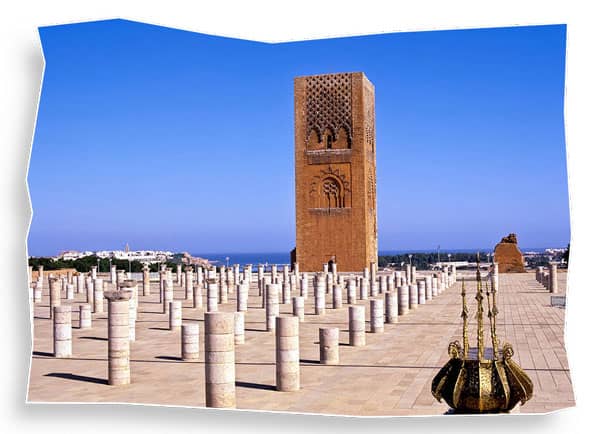
2. Fes – The Spiritual Heart of Morocco
-
- Fes el-Bali (Old Medina): One of the world’s oldest and largest car-free urban areas, known for its maze-like streets and historic architecture.
- Al Quaraouiyine University: Founded in 859 AD, it’s the world’s oldest continuously operating university.
- Chouara Tannery: Witness the ancient art of leather tanning in this vibrant, yet pungent, part of the medina.

3. Meknes – The Forgotten Imperial City
- Bab Mansour: Considered one of the most beautiful gates in North Africa, showcasing intricate zellij tilework.
- Heri es-Souani: The massive royal granaries and stables built by Sultan Moulay Ismail to feed his armies and horses.
- Volubilis: Just a short drive from Meknes, this ancient Roman city is one of the best-preserved archaeological sites in North Africa, known for its stunning mosaics.
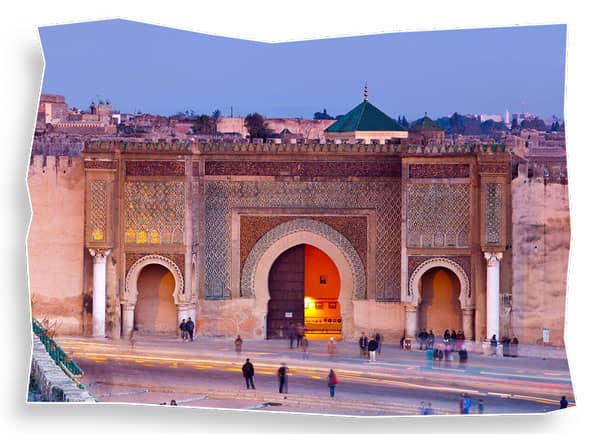
4. Marrakech – The Red City
- Jemaa el-Fnaa: The bustling main square, alive with street performers, food stalls, and storytellers, especially vibrant at night.
- Koutoubia Mosque: An iconic symbol of Marrakech with its stunning minaret, visible from almost anywhere in the city.
- Majorelle Garden: A peaceful retreat with exotic plants and the famous blue villa once owned by Yves Saint Laurent.
- Saadian Tombs: Rediscovered in 1917, these tombs date back to the 16th century and are known for their stunning decorative details.
Cultural Immersion
- Artisan Crafts: From the intricate zellij tiles of Fes to the leather goods of Marrakech, each city offers a unique artistic tradition.
- Local Cuisine: Savor iconic Moroccan dishes like tagine, couscous, and pastilla, along with refreshing mint tea.
- Museums and Cultural Centers: The Batha Museum in Fes and the Dar Jamai Museum in Meknes offer fascinating insights into Moroccan art and history.
Travel Tips for this Route
- Best Time to Visit: Spring (March to May) and autumn (September to November) for pleasant weather.
- Accommodation: Consider staying in traditional riads for an authentic Moroccan experience.
- Cultural Etiquette: Dress modestly in the medinas and be mindful of photography, especially when capturing people or religious sites.
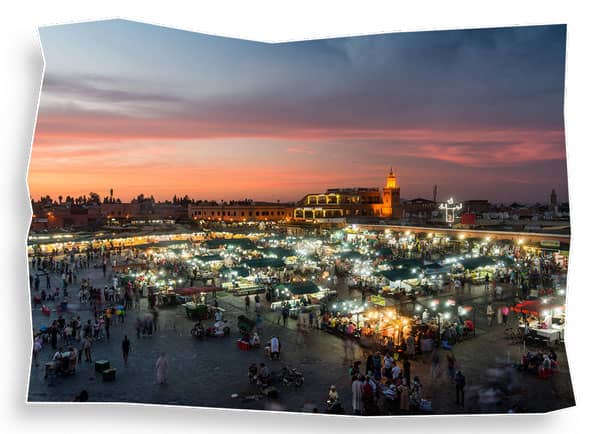
Ready to Hit the Road in Morocco?
Buckle up for the adventure of a lifetime! From the winding roads of the Atlas Mountains to the golden dunes of the Sahara, Morocco is a road-tripper’s dream. Discover scenic routes, stop in timeless villages, and explore landscapes that shift from coastlines to kasbahs. Whether you’re chasing sunsets, culture, or pure adrenaline—this guide will lead the way.
The road is calling. Are you ready to answer?
Route 2: The Atlantic Coastal Drive (Tangier – Asilah – Essaouira – Agadir)
This route is a dream for ocean lovers, artists, and those seeking a relaxed coastal vibe. It stretches along Morocco’s Atlantic coast, offering a mix of historic port cities, bohemian beach towns, and stunning seaside landscapes. The fresh sea breeze, endless ocean views, and vibrant local culture make this a refreshing change from the bustling medinas of the imperial cities.
Distance and Duration
- Total Distance: Approximately 900 kilometers (560 miles)
- Recommended Duration: 8 to 12 days, depending on how much time you spend relaxing on the beaches or exploring the coastal towns.
Major Stops and Highlights
1. Tangier – The Gateway to Africa
- Kasbah Museum: Located within the old sultan’s palace, this museum showcases the city’s rich history and its connection to Europe.
- Caves of Hercules: A legendary cave where, according to myth, Hercules rested after his 12 labors. It offers stunning views of the Atlantic.
- Tangier Medina: A vibrant mix of Spanish, French, and Moroccan influences, with bustling souks and colorful street art.
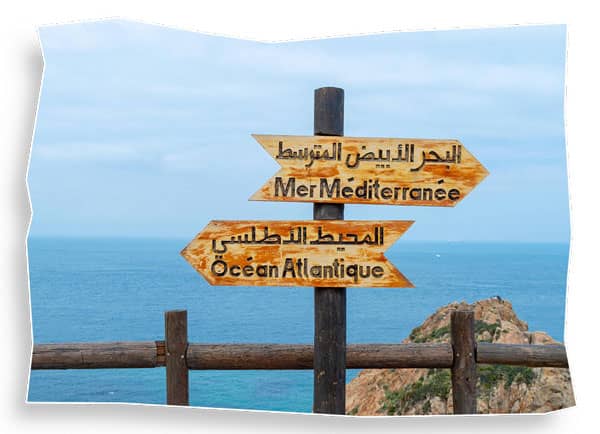
2. Asilah – The Artistic Whitewashed Town
- Medina Walls: Famous for their bright, ever-changing murals painted by local and international artists during the annual arts festival.
- Paradise Beach: A short drive or camel ride away, this pristine beach is perfect for swimming, sunbathing, and picnicking.
- Art Galleries: Explore small galleries and artisan shops selling handmade crafts and contemporary art.

3. Essaouira – The Windy City
- Medina and Ramparts: A UNESCO World Heritage site known for its fortified walls, charming blue-and-white architecture, and vibrant arts scene.
- Skala de la Ville: An oceanfront fortress with dramatic Atlantic views, perfect for photography and sunset watching.
- Kite and Wind Surfing: Essaouira’s windy coastline is a top spot for these water sports, attracting adventurers from around the world.
- Gnaoua Music Festival: If your trip coincides with this world-famous festival, expect soulful, rhythmic music echoing through the streets.
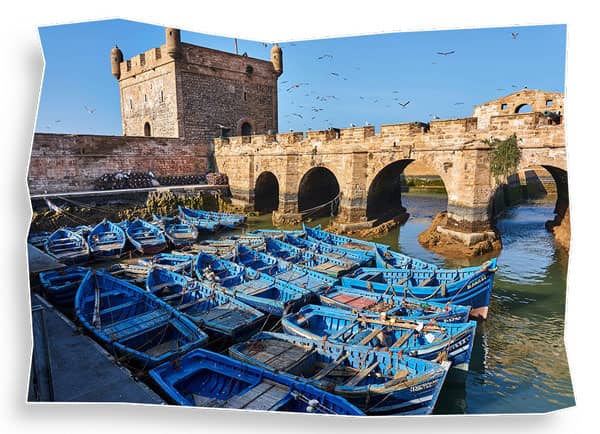
4. Agadir – The Beach Lover’s Paradise
- Agadir Beach: Known for its golden sands and modern promenade, it’s a great place to relax after days on the road.
- Kasbah Ruins: Climb up to these ruins for panoramic views of the city and coastline, especially stunning at sunset.
- Souk El Had: One of Morocco’s largest markets, perfect for picking up local produce, spices, and souvenirs.
- Day Trips: From Agadir, you can explore the nearby Paradise Valley or take a boat trip along the coast.
Surfing Spots, Seafood, and Creative Inspiration
- Best Surfing Spots: Taghazout, just north of Agadir, is a world-renowned surf destination with waves for all skill levels.
- Seafood Markets: Sample freshly caught fish and seafood in the coastal towns, especially in Essaouira, where fishing is a way of life.
- Artistic Vibes: Many of these towns, particularly Asilah and Essaouira, attract artists and musicians, making them great places to get inspired.
Travel Tips for this Route
- Best Time to Visit: Late spring and early autumn for warm, breezy weather.
- Accommodation: Stay in seafront riads or guesthouses for a truly immersive coastal experience.
- Packing Essentials: Bring sunscreen, a good camera, and comfortable beachwear. Don’t forget a jacket, as coastal evenings can be cool.
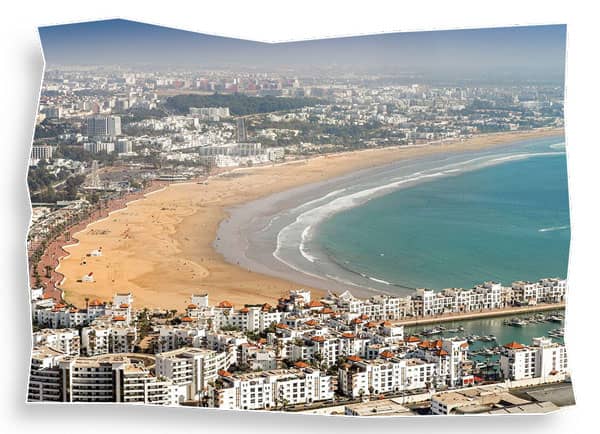
Ready to Hit the Road in Morocco?
Buckle up for the adventure of a lifetime! From the winding roads of the Atlas Mountains to the golden dunes of the Sahara, Morocco is a road-tripper’s dream. Discover scenic routes, stop in timeless villages, and explore landscapes that shift from coastlines to kasbahs. Whether you’re chasing sunsets, culture, or pure adrenaline—this guide will lead the way.
The road is calling. Are you ready to answer?
Route 3: The High Atlas & Desert Adventure (Marrakech – Aït Benhaddou – Merzouga – Todra Gorges)
This route is a must for those seeking adventure and dramatic landscapes, from the towering peaks of the High Atlas Mountains to the golden dunes of the Sahara Desert. It’s a journey filled with winding mountain passes, ancient kasbahs, palm-filled oases, and unforgettable desert experiences.
Distance and Duration
- Total Distance: Approximately 1,200 kilometers (750 miles)
- Recommended Duration: 10 to 14 days, allowing time for hiking, off-road driving, and stargazing in the desert.
Major Stops and Highlights
1. Marrakech – Gateway to the Atlas
- Jemaa el-Fnaa: Start your journey in this bustling square, a sensory overload of street performers, food stalls, and local vendors.
- Koutoubia Mosque: An iconic symbol of the city, visible from miles around, perfect for sunset photography.
- Souks of the Medina: Stock up on desert essentials like scarves, traditional clothing, and handcrafted jewelry.
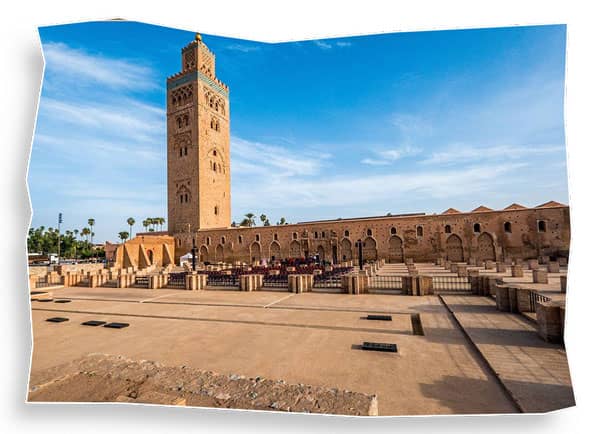
2. Tizi n’Tichka Pass – The High Atlas Crossing
- Elevation: The highest major mountain pass in North Africa at 2,260 meters (7,410 feet).
- Scenic Views: Stunning vistas of snow-capped peaks, deep valleys, and Berber villages clinging to the hillsides.
- Road Conditions: Steep and winding, but fully paved, with occasional fog and snow in winter. Drive carefully.
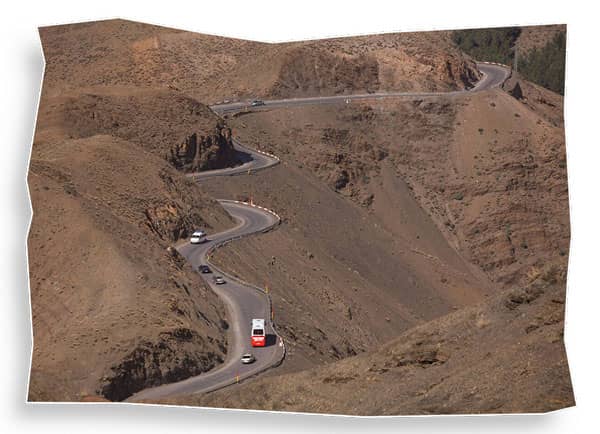
3. Aït Benhaddou – The Iconic Kasbah
- UNESCO Heritage Site: One of Morocco’s most famous ksars (fortified villages), known for its clay architecture.
- Hollywood Backdrop: Featured in films like Gladiator, Lawrence of Arabia, and Game of Thrones.
- Village Tour: Cross the river and wander through its narrow alleys and crumbling kasbahs for a taste of ancient life.

4. Skoura Oasis – The Palm Grove of 1,000 Kasbahs
- Date Palms and Almond Trees: This lush, green oasis is a sharp contrast to the surrounding desert.
- Kasbah Amridil: One of the best-preserved kasbahs in the region, complete with traditional tools and artifacts.
- Photography: The oasis offers stunning photo opportunities, especially at sunrise and sunset.
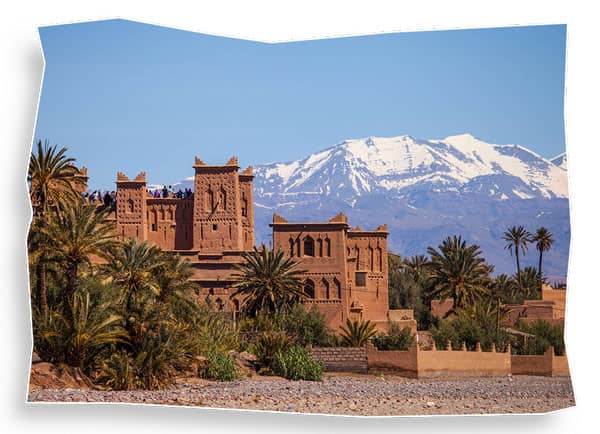
5.Dades Valley and Todra Gorges – Nature’s Masterpieces
- Dades Valley: Known as the “Road of a Thousand Kasbahs,” with stunning rock formations and ancient fortresses.
- Todra Gorges: Towering limestone cliffs rising 300 meters (1,000 feet) above a narrow, crystal-clear river. Perfect for hiking and rock climbing.
- Berber Villages: Meet local Berber families and experience their traditional hospitality.
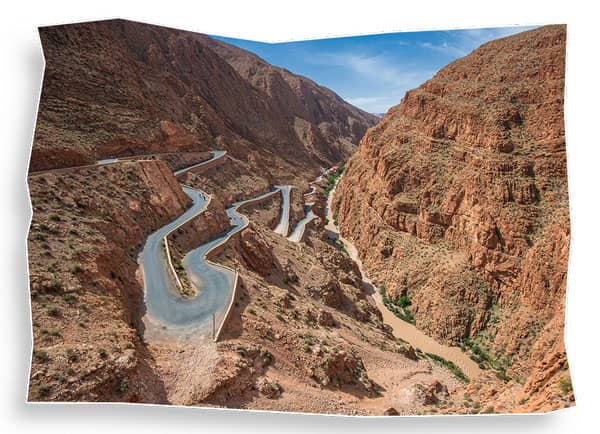
6. Merzouga – Gateway to the Sahara
- Erg Chebbi Dunes: Some of the tallest sand dunes in Morocco, reaching up to 150 meters (500 feet).
- Desert Camps: Spend a night under the stars in a traditional Berber tent or a luxury desert camp.
- Camel Trekking: A must-do experience, ride through the dunes as the sun sets over the golden sands.
- Stargazing: The clear desert skies offer a breathtaking view of the Milky Way and countless constellations.
Desert Experiences and Cultural Immersion
- Sandboarding: For thrill-seekers, try sandboarding down the steep dunes of Erg Chebbi.
- Gnawa Music: Experience the hypnotic rhythms of this ancient African music in the desert.
- Local Cuisine: Enjoy traditional dishes like Berber pizza, tajine, and freshly baked flatbread cooked in desert sand.
Travel Tips for this Route
- Best Time to Visit: Spring (March to May) and autumn (September to November) for cooler temperatures and clear skies.
- Vehicle Choice: A 4×4 is recommended for the desert and unpaved mountain roads.
- Packing Essentials: Bring a good camera, warm clothing for desert nights, and plenty of water.

Ready to Hit the Road in Morocco?
Buckle up for the adventure of a lifetime! From the winding roads of the Atlas Mountains to the golden dunes of the Sahara, Morocco is a road-tripper’s dream. Discover scenic routes, stop in timeless villages, and explore landscapes that shift from coastlines to kasbahs. Whether you’re chasing sunsets, culture, or pure adrenaline—this guide will lead the way.
The road is calling. Are you ready to answer?
Route 4: Northern Morocco Explorer (Tangier – Chefchaouen – Tetouan – Akchour)
This northern route is perfect for nature lovers, photographers, and those seeking a blend of Arab, Berber, and Spanish influences. It offers stunning mountain landscapes, vibrant blue streets, and the refreshing greenery of the Rif Mountains, making it a unique alternative to the more commonly traveled routes in southern Morocco.
Distance and Duration
- Total Distance: Approximately 300 kilometers (185 miles)
- Recommended Duration: 5 to 8 days, with time to hike, explore small towns, and soak in the relaxed mountain atmosphere.
Major Stops and Highlights
1. Tangier – The Cultural Crossroads
- Medina and Kasbah: Explore the winding alleys of the old city, filled with historic buildings and lively souks.
- Cap Spartel: Visit the meeting point of the Atlantic Ocean and the Mediterranean Sea, with breathtaking coastal views.
- American Legation Museum: The only U.S. National Historic Landmark outside the United States, showcasing the deep connection between Morocco and America.
- Tangier Beaches: Relax on the Mediterranean shores or take a boat trip across the Strait of Gibraltar.
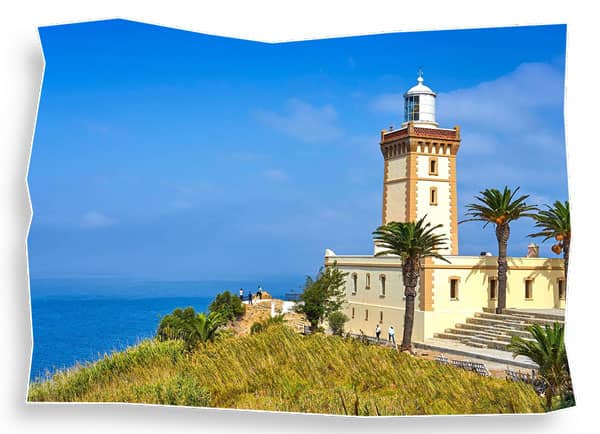
2. Chefchaouen – The Blue Pearl of Morocco
- Blue-Washed Streets: Wander the iconic blue alleys that make this town one of the most photogenic spots in the world.
- Ras El Ma Waterfall: Just a short walk from the medina, this natural spring offers a peaceful spot to cool off.
- Spanish Mosque: Hike up to this hilltop mosque for panoramic views of the blue city, especially beautiful at sunset.
- Local Craftsmanship: Shop for handwoven blankets, leather goods, and traditional Moroccan clothing.
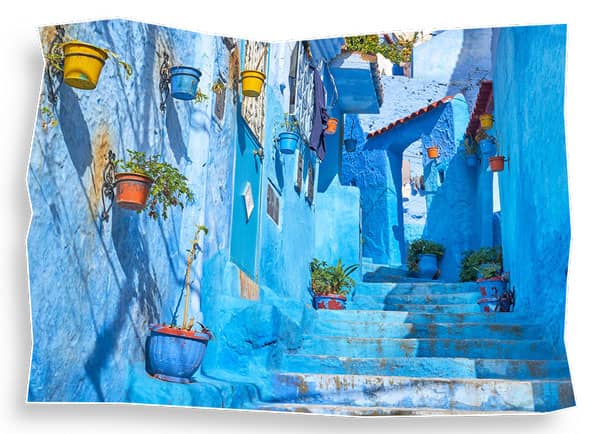
3. Tetouan – The White Dove of the North
- Historic Medina: A UNESCO World Heritage site known for its Andalusian architecture and vibrant markets.
- Archaeological Museum: Learn about the region’s rich Roman and Phoenician history.
- Artisan Crafts: Tetouan is a hub for traditional crafts, including intricate woodwork, ceramic tiles, and fine embroidery.
- Tetouan Beach: Relax on the nearby Martil or Cabo Negro beaches, popular with locals and tourists alike.
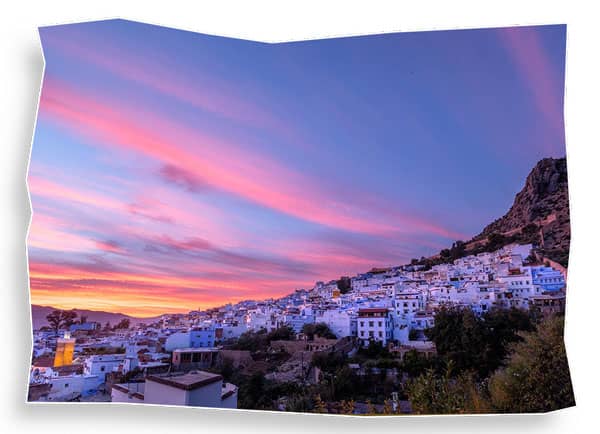
4. Akchour – The Hidden Gem of the Rif Mountains
- God’s Bridge: Hike through the rugged Rif Mountains to this natural stone arch, a breathtaking sight for adventure seekers.
- Akchour Waterfalls: A series of stunning waterfalls and crystal-clear natural pools, perfect for a refreshing swim.
- Picnic Spots: Bring some local snacks and enjoy a peaceful day surrounded by lush forests and the sound of rushing water.
Cultural Blend and Natural Beauty
- Spanish Influence: The northern cities have a strong Andalusian influence, reflected in their architecture, cuisine, and language.
- Rif Mountain Scenery: Expect dramatic mountain landscapes, dense forests, and picturesque valleys, perfect for hiking and photography.
- Local Flavors: Try regional dishes like Bissara (a hearty fava bean soup) and fresh mountain goat cheese.
Travel Tips for this Route
- Best Time to Visit: Spring and early summer for lush greenery and cooler mountain air.
- Packing Essentials: Comfortable walking shoes, a light jacket for cool evenings, and a good camera for those stunning blue streets.
- Safety Note: Some of the hiking trails can be challenging, so be prepared with sturdy footwear and plenty of water.

Route 5: The Off-the-Beaten-Path South (Agdz – Zagora – Tata – Tafraoute)
For those seeking solitude, authenticity, and a deeper connection with Morocco’s ancient culture, this southern route offers a journey through remote oases, surreal rock formations, and traditional Amazigh (Berber) villages. It’s an adventure into the heart of Morocco’s most untouched landscapes, perfect for experienced road-trippers looking to escape the tourist crowds.
Distance and Duration
- Total Distance: Approximately 1,100 kilometers (680 miles)
- Recommended Duration: 10 to 14 days, with time to explore the remote landscapes and interact with the local Amazigh communities
Major Stops and Highlights
1. Agdz – Gateway to the Draa Valley
- Draa Valley: One of the longest river valleys in Morocco, filled with palm groves, fortified kasbahs, and small farming communities.
- Kasbah Tamnougalt: An ancient kasbah overlooking the lush palm oasis, with a maze of narrow alleyways and mud-brick walls.
- Rock Art and Petroglyphs: Discover ancient carvings and petroglyphs hidden in the surrounding hills, some dating back thousands of years.
- Local Markets: Experience a truly local souk where villagers come to trade livestock, dates, and traditional handicrafts.

2. Zagora – The Last Stop Before the Sahara
- Tamegroute: Visit this historic village known for its green-glazed pottery and ancient Quranic library, which houses manuscripts over 900 years old.
- Dunes of Tinfou: Smaller than the famous Erg Chebbi, but still impressive, offering a taste of the Sahara without the crowds.
- Camel Trekking: Embark on a short camel ride into the desert, followed by a traditional Moroccan tea ceremony under the stars.

3. Tata – The Red Rock Oasis
- Rock Formations: Explore the surreal, red rock landscapes that surround this remote desert town.
- Ancient Granaries: Visit the age-old collective granaries (igoudar) used by local tribes for storing grains and valuables.
- Hiking and Star Gazing: With minimal light pollution, Tata offers some of the clearest night skies in Morocco, perfect for stargazing.

4. Tafraoute – The Heart of the Anti-Atlas Mountains
- Painted Rocks: Visit the iconic painted rocks created by Belgian artist Jean Vérame, scattered across the desert like surreal, colorful boulders.
- Aït Mansour Gorge: A stunning palm-filled canyon, ideal for hiking, picnicking, or just soaking in the natural beauty.
- Traditional Amazigh Villages: Discover the unique architecture and deep-rooted traditions of the local Amazigh communities.
- Ameln Valley: Known for its striking pink granite mountains and ancient rock carvings, especially beautiful at sunset.
Local Encounters and Cultural Immersion
- Amazigh Traditions: Learn about the rich history, music, and cuisine of Morocco’s indigenous Amazigh people.
- Desert Camping: Spend a night under the stars in a remote desert camp for a truly authentic experience.
- Traditional Crafts: Pick up unique souvenirs like handwoven carpets, silver jewelry, and intricately carved wooden objects.
Travel Tips for this Route
- Best Time to Visit: Late autumn to early spring, when the desert heat is more bearable.
- Vehicle Choice: A 4×4 is strongly recommended for this rugged, often unpaved terrain.
- Safety Note: Make sure to carry enough water, fuel, and spare tires, as services can be sparse in these remote areas.
- Respect Local Customs: Dress modestly and always ask for permission before photographing locals or their homes.
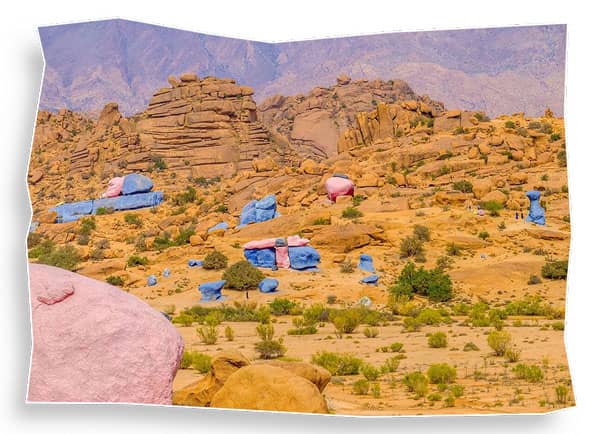
Tips for a Successful Road Trip in Morocco
To make the most of your Moroccan road trip, a bit of preparation goes a long way. Here are some practical tips to ensure a safe, comfortable, and culturally respectful journey:
Packing Essentials
- Navigation Tools: A reliable GPS, offline maps (like Maps.me), and a physical map as a backup.
- Emergency Kit: Spare tire, tire jack, basic tools, flashlight, first aid kit, and extra water.
- Comfort Items: Sunglasses, sunscreen, a hat, and a reusable water bottle for those long desert drives.
- Clothing: Lightweight, breathable fabrics for the heat, and warmer layers for cool desert nights. Modest clothing is recommended for cultural sensitivity.
- Cash and Cards: While major cities accept cards, many small towns and rural areas rely on cash. Keep a mix of small bills for tips and roadside purchases.
- Photography Gear: Bring a good camera or smartphone with plenty of storage, as Morocco offers endless photo opportunities.
Budgeting and Local Costs
- Fuel Costs: Diesel is generally cheaper than gasoline in Morocco. Expect to pay around 12-14 MAD per liter (around $1.20-1.40).
- Tolls: The main highways (autoroutes) have tolls, so keep some cash handy for quick access.
- Accommodation: Riads, guesthouses, and eco-lodges range from budget to luxury, with prices varying by location and season.
- Meals: Street food and small local restaurants are budget-friendly, while upscale dining in cities like Marrakech can be more expensive.
Respecting Local Customs and Road Etiquette
- Greetings: A simple “Salam Alaykum” (peace be upon you) goes a long way in building friendly connections.
- Modesty: Dress conservatively, especially in rural areas and religious sites.
- Photography: Always ask for permission before photographing people, especially in more conservative regions.
- Driving Style: Moroccan drivers can be unpredictable, and roundabouts can be chaotic. Drive defensively and always use your mirrors.
- Road Signs: Mostly in Arabic and French, with some in English around major tourist areas. Learn basic road signs to avoid confusion.
- Pedestrian Awareness: Be cautious in towns and villages, as pedestrians, bicycles, and even livestock often share the road.
Where to Stay: Riads, Guesthouses, and Eco-Lodges
- Riads: Traditional Moroccan houses with beautiful courtyards, often located in the heart of medinas. Perfect for a culturally immersive experience.
- Guesthouses: A great option for budget travelers or those seeking a more personal, family-style stay.
- Eco-Lodges: Ideal for nature lovers, offering a more sustainable and often remote experience in Morocco’s diverse landscapes.
- Desert Camps: For those traveling to the Sahara, a night under the stars in a Berber tent is a must.
Staying Connected and Navigation
- Local SIM Card: Consider buying a Moroccan SIM card for reliable, affordable data. Maroc Telecom and Orange have the best coverage.
- Offline Maps: Download offline maps before you set off, especially for rural areas with limited signal.
- Language Help: Learn a few basic Arabic and French phrases, as English is less common in remote areas.
Final Travel Tips
- Be Flexible: Road conditions, weather, and local events can all impact your plans, so build in some buffer time.
- Avoid Night Driving: Roads can be poorly lit, and unexpected hazards like animals or stalled cars are common.
- Stay Hydrated: Especially in the desert regions, where heat and dry air can lead to dehydration.
conclusion
Road tripping through Morocco is an unforgettable way to experience the country’s rich culture, diverse landscapes, and warm hospitality. From the windswept beaches of the Atlantic coast to the towering peaks of the High Atlas and the rolling dunes of the Sahara, each route offers a unique glimpse into Morocco’s vibrant heritage and natural beauty.
Choosing the open road allows you to discover hidden gems, connect with local communities, and immerse yourself in the slow rhythm of Moroccan life. It’s an adventure that rewards the curious and the brave, encouraging you to wander off the beaten path and explore beyond the typical tourist routes.
So, fuel up, pack your sense of adventure, and set out to uncover the many layers of Morocco. The road awaits, and every turn promises a new story, a fresh perspective, and a lasting memory.
